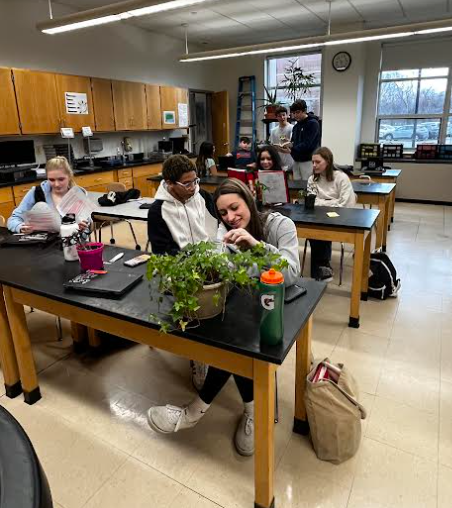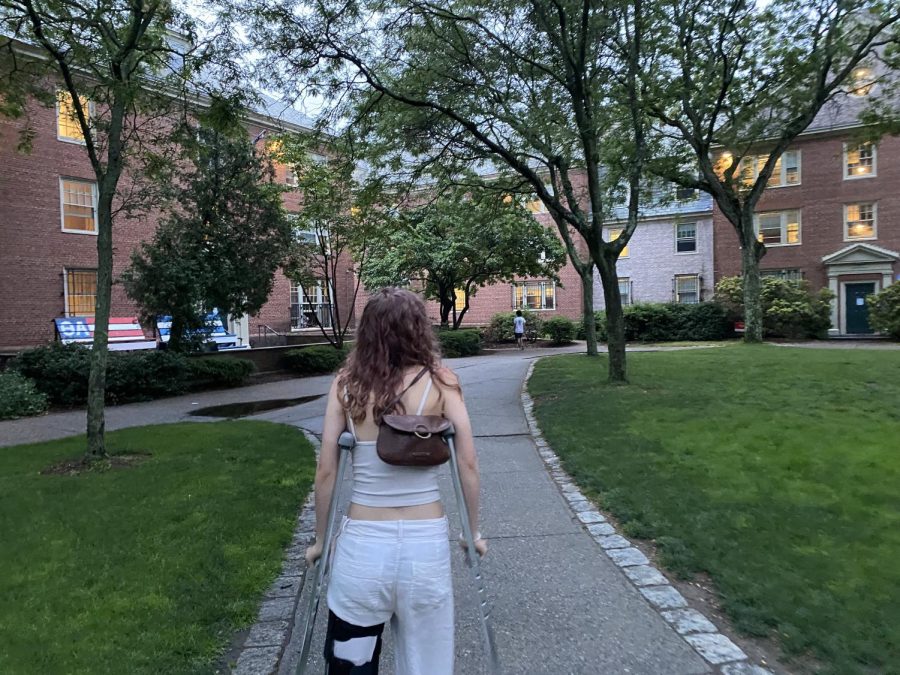Struggling with full distance learning
April 9, 2021
Since the beginning of the school year, I have been a full-time distance learning student. Every day, I log on to my computer around 7 a.m. and log off around 1 p.m. to “attend school”. Because of my situation, I know the ins and outs of online learning and the issues involved better than the average hybrid learner, and I would like to bring them to light.
First of all is the technology barrier that the students learning exclusively from home face. When a hybrid learner faces an issue in their distance learning, then it’s no worry, they will be able to come into a better learning environment the next day. They can ask questions, get more helpful suggestions from the teacher, and overall just have an advantage in their ability to learn.
Also due to the fact that hybrid learners are in school half the time, it allows for a very crucial, although sometimes overlooked, bond to form between the students and the teacher. Typically, students are with these teachers for one or two semesters, making some sort of bond between the students and teachers absolutely crucial. Without being there in person, it is much harder for each party to get to know the other. Essentially, the full distance learning students are watching the class like a television show, with few opportunities to participate.
This fact is not helped by the quality of the technology many students have to use. The chromebooks provided to the school are not of a high quality whatsoever. I know most of the students in my junior class have had their chromebooks since the seventh grade, and it shows. It takes sometimes minutes on end for students to load their tabs, WiFi cuts out frequently, force shut down, and countless other more specific issues exist. Personally I know that my chromebook has a hole in its side, and my sister’s old chromebook would randomly shut down if she angled the screen in a certain way. These issues do not personally affect me anymore, since I work from my own personal computer now. However, this does not change the fact that so many students are struggling to learn when they are incapable of staying in the meet for the entire allotted period of the class. (NOTE: I would like to establish that I am not implying that the school needs to get new computers. While the computers we currently have are not amazing, it would require more money than reasonable to get new ones for every single student. The issue with the school’s technology is massive, but there is no easy solution to it).
An additional problem that has arisen during this tumultuous year has been the forced implementation of Canvas. While this is an entire debate in itself, I would like to touch on it briefly in regards to how it affects distance learning. Students and teachers alike are having such a hard time with everything going on this year, it is clear that no one is perfectly understanding of everything new. Yet despite this, the school is having every teacher entirely switch over to Canvas before the end of the school year. This platform has been lambasted for being difficult to understand by students and teachers alike, whereas the response to Google Classroom is overwhelmingly positive. Back in November I conducted a survey for my democracy class project; I sent out a form to over seventy students asking them their opinions on google classroom, canvas, and distance learning. In the survey, nearly two-thirds of the sixty-nine responses claimed that Canvas was too confusing and that Google Classroom was the far better alternative. Yet despite the massive amounts of criticism it has faced, the school has still decided to go forward with its implementation. The relationship between teachers and online students is already difficult enough, how can it be expected to flourish if the teacher needs to spend more class time trying to figure out how to use Canvas as well?
So what is the solution to all of this? How can we all work together to bridge the gap between distance learning students and their normal classrooms? While I was writing this article over the course of the month, this is what I was trying to figure out. I have come to the conclusion there needs to be a serious overhaul to the way we learn from home.
First off, the implementation of Canvas desperately needs to be put off, in my opinion. By the time the platform is put into effect, the school year will nearly be over, and students and staff will have the whole summer to forget how to use Canvas. At this point in the year, I only see it as futile. It’s too little too late.
Second, there are many ways to better engage online students in class than teachers currently do. The actual technology barrier provided by the poor chromebooks is one that will not easily be overcome, but students and teachers alike can both work to shrink the divide. I was exploring Google Meets a while back, and came across some interesting things. In the upper right sidebar, where you can view meeting attendees, there is a very interesting set of options that everyone seems to disregard. These options are referred to as the “activities” section.
The activities section is home to a few methods that teachers can use to get closer with their students and help them to learn better. One of these is a “Question and Answer” feature, which allows meeting participants to ask questions that other participants can upvote. The upvoted questions will then appear higher in the teacher’s feed. This would allow students to ask questions that a lot of them might have, and teachers could get a good idea as to what they need to better explain and what students may be confused about.
Another useful function provided by the activities section is called “Polls”. Polls allow for a teacher or meeting host to create a poll that will be sent out to other meeting participants so that the host can quickly get a pulse of how the audience is doing. Without even spending too much time thinking about it, I can already imagine so many possibilities as to how this could be helpful in school. Imagine if a teacher could ask the class if they understand the material in a poll. The students who may be too nervous to say in front of the whole class that they didn’t understand the material may be able to express a concern that way. A teacher could also put out a poll with questions based on the material they have been teaching, so students can check if they really understand something by applying it to an actual problem. The polls could also be an effective tool for a review or pop quiz, with teachers being able to put out a small series of questions for students to answer. This way, the teachers can create a quick and easy assessment of their student’s abilities, and the students don’t have to worry about opening up another tab that will be made unbearably laggy by the google meet. It is a win-win situation for everyone involved.
These are just a few of the ideas I was quickly able to come up with when brainstorming solutions to help distance learners, so imagine the solutions that extensive planning from the people in power could create. Of course, at the end of the day, the decision isn’t mine to make. It’s up to those in charge to make the choice in support of our school’s distance learners. What we can do as students is use our voices to make these people aware of our issues with the system, and advocate for a change that supports us and the way that we learn.






Ray benjamin
Apr 12, 2021 at 8:02 PM
Well done my grandson,so proud of you. Looks like writing may be the flame that keeps your fire burning. Great article.
PEPE’
Uncle Scott
Apr 12, 2021 at 7:17 PM
Bravo my brilliant nephew! Can i share?